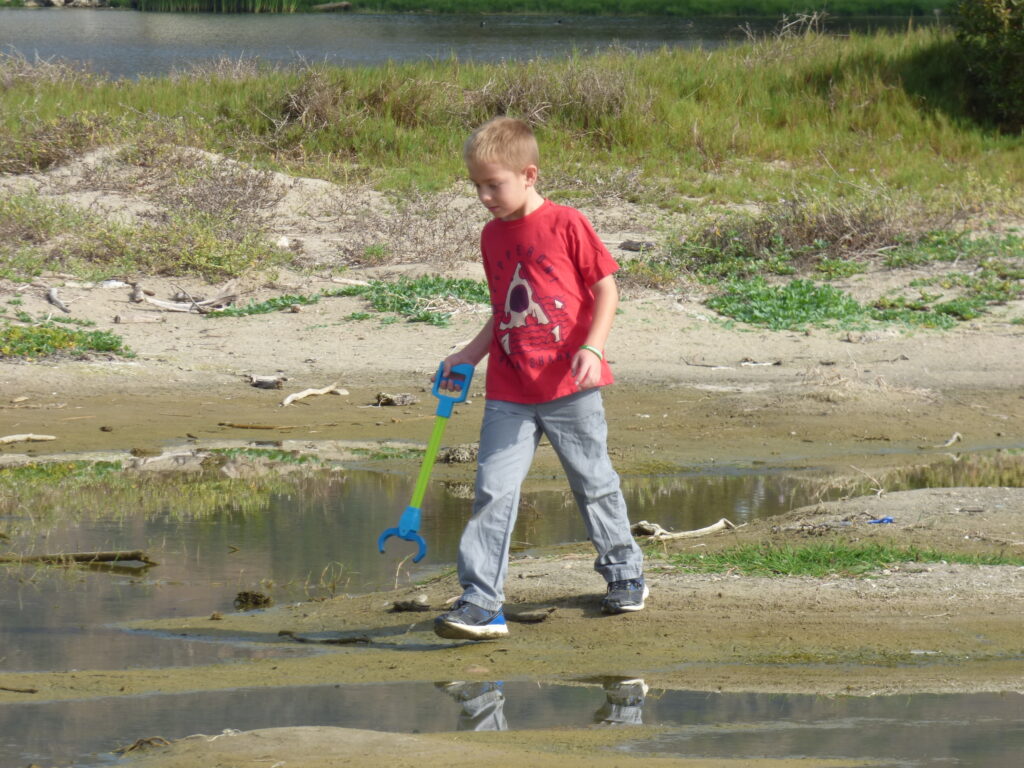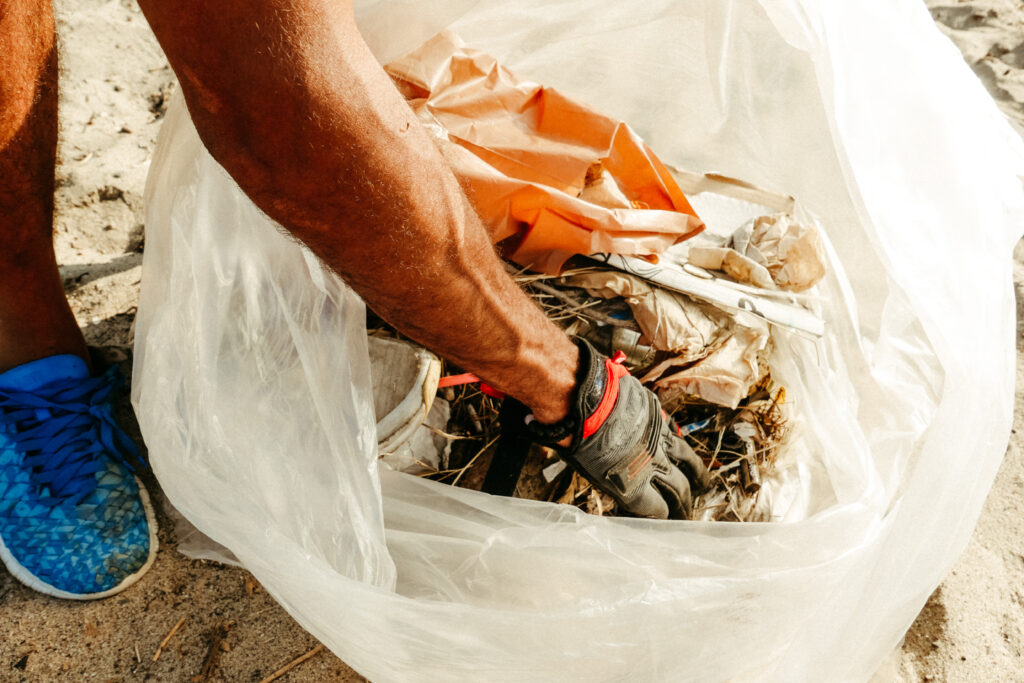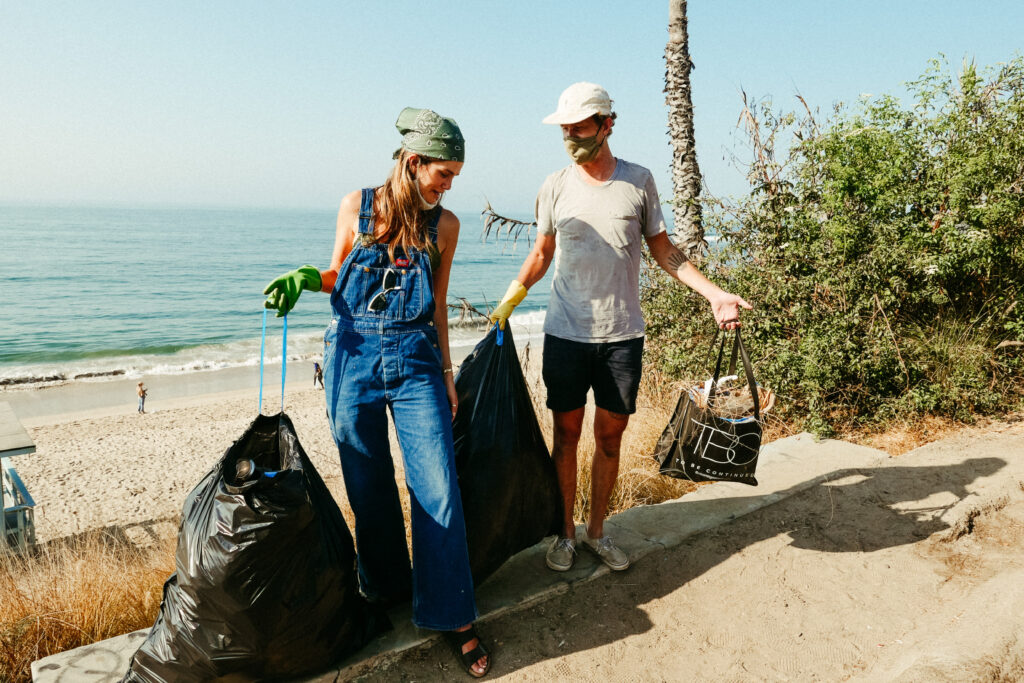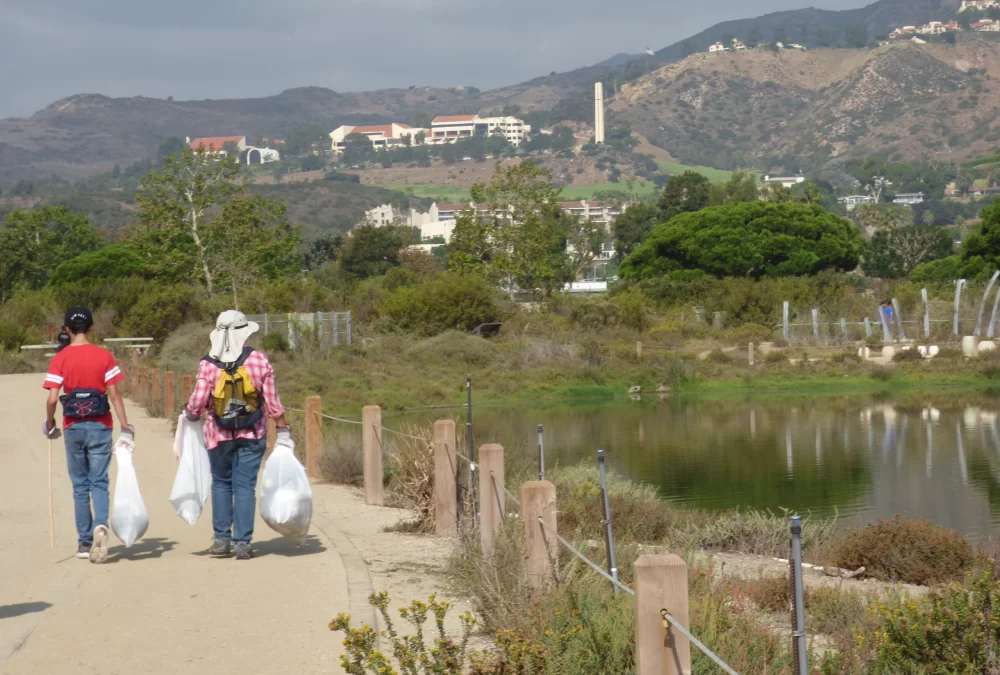For more than 30 years, volunteers have come together for International Coastal Cleanup Day every September. The massive group cleanup events that have attracted more than six million volunteers in 90 countries are on hold this year, but the call to action was still issued.
On beaches around the world this month activists are going solo to protect and restore beach ecosystems.
The California Coastal Commission, which sponsors the cleanup statewide, has called for Coastal Cleanup Day to become Coastal Cleanup Month.
Heal the Bay, traditionally organizes local cleanup events, invites everyone to take part.
“We [will] spend the entire month of September celebrating our watersheds and coastline with decentralized cleanups and weekly programming,” an announcement states.
“Grab your family or housemates to clean up your street, park, local shoreline, or anywhere else that you call your happy place. Join Heal the Bay as we come together (at a safe distance) to help protect and clean what we love.”
Participating is as easy as bringing gloves and a bucket or bag (and don’t forget a mask!) to the beach or the nearest creek, and gathering trash. Some volunteers make a day of it, others may spend just a few minutes, but it all helps. Hand collection is time-consuming but it makes a major difference, and helps protect an unexpectedly important natural resource—natural tide wrack, the seaweed and other marine debris deposited on the beach during ever high tide.

For many years, the Los Angeles County Department of Beaches and Harbors did their best to sweep the beach clean not only of human-generated trash but also of the natural tide wrack.
Giant sand-grooming machines the size of mastodons roared across the sand, sweeping up kelp and other flotsam and unwittingly pushing beach-dependent species towards extinction.
A growing awareness that the beach is an important ecosystem is beginning to change that. In 2006, Los Angeles Times journalist wrote, “Where the sand turns wet, the greatest wilderness on the planet begins.”
The beaches of Los Angeles County are some of the most popular and heavily visited beaches in the world. That has become a problem for key beach species, some of which have nearly disappeared.
That better understanding of beach ecology, combined with a push by activists and conservation organizations, is beginning to turn the tide for species like beach wildflowers, sea lions, grunion, the legless silver sand lizard and the endangered least tern and snow plover.
During the spring and summer, grunion deposit eggs in the sand between the highest tide line and mean tide line. The county’s beach grooming practices may have left pristine sand behind but the also impacted the grunion eggs. This small fish is a major keystone species that feeds an entire ecosystem. Without it, birds and other species that depend on grunion, disappear.
Research on the impact of beach grooming on grunion has led to modifications in beach grooming on several Southern California beaches, including Westward and Zuma in Malibu. In Malibu, they do modify their grooming practice. These county beaches are now left ungroomed from the middle of March until the middle of August to accommodate the grunion, and that’s a benefit for shorebirds that don’t eat grunion but do eat the rich assortment of invertebrates that thrive in kelp wrack.
Thanks to the change in beach grooming policy, species like the snowy plover have a chance for survival. This species is entirely dependent on the beach for survival. It declined drastically on the West Coast during the late 20th century but there are signs that the population is recovering slightly. Snowy plovers have successfully nested on local beaches in recent years. This bird has many human defenders, who help patrol the beaches where plovers nest in an effort to keep the birds safe.
Beach wildflowers are also making a comeback in some areas. A pilot project in Santa Monica, begun by the Bay Foundation in 2016, is beginning to transform a three-acre stretch of sand back into a sand dune, covered with flowers like sand verbena and beach evening primrose. Another three-acre plot project is scheduled to begin this winter at Zuma and Westward beaches in Malibu, where native dune plants are already recolonizing the beach in some areas.
Dunes and shoreline habitat are increasingly important resources for birds that once depended on Los Angeles County’s abundant wetlands for survival.
The challenge is restoring and maintaining natural beach habitat while still accommodating recreational demands. Volunteers can make a real difference not just during Coastal Clean Up month but on any trip to the beach or into the watershed. Every piece of trash that is collected is one less hazard for marine and shore life.
Malibu was an early adopter of styrofoam, plastic bag and straw bans that are now becoming more widespread, but the most common types of human detritus along the coast from Topanga to the Ventura County Line still include drink containers, plastic food wrappings and utensils, and tiny fragments of the ubiquitous styrofoam, as well as glass, and cigarette butts.
Cigarette butts may be small but they represent a double threat to seabirds—toxins from tobacco, and indigestible fibers in the filters that can ultimately kill the animal that ingests them. The disposable lighters that inevitably accompany the cigarettes are a special hazard to California brown pelicans, who are thought to mistake the colorful plastic for squid.
While discarded needles, plastic tampon dispensers, and condoms have been an unsanitary and potentially deadly beach trash problem for years, they have recently been joined by another type of medical waste—single-use surgical masks. The ear loops on the masks have already been shown to entangle seabirds, and the synthetic fibers used to make the filter do not biodegrade.
The type of trash on the beach that poses the highest risk to wildlife remains fishing line and tackle. This “ghost gear” entangles and kills all kinds of marine life, including endangered sea turtles and whales. It also smothers habitat, and can even become a hazard to navigation, making this class of debris a major marine hazard.

Some beach trash also poses a threat to the safety of humans. It’s a good idea to use gloves and care. Heal the Bay is stressing the importance of staying safe and observing coronavirus safety measures while participating. It’s also important to stay aware of air quality issues this month, potentially postponing outdoor activity plans for a day when air quality levels are safe and the wildfire crisis has abated. Learn more about Coastal Cleanup Month and how to participate at https://healthebay.org/coastalcleanupmonth/. For a beach cleanup activist’s guide, visit https://www.surfrider.org/pages/intl-coastal-cleanup-day














